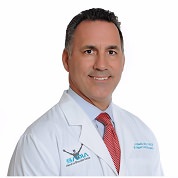Hand and Upper Limb Orthopedic Surgeon Dr. Alejandro Badia says technique safe, precise, effective; offers tips.
MIAMI (PRWEB) June 26, 2019
Arthroscopy? It may sound “Greek” to you, but this minimally invasive diagnostic and surgical approach to repair of joints, most notably the bigger joints of the knee and shoulder and also in the smaller joints like hand, wrist, elbow and base of the thumb, is proving safe, effective – and precise, says noted orthopedic surgeon and sports-injury specialist Alejandro Badia MD.
Indeed, the term “arthroscopy” has its roots in Greek language, coming from a combination of “artho” or joint and “scope,” which means “to view,” Dr. Badia says.
Oftentimes called “keyhole surgery,” the technique is usually performed in an outpatient setting and involves passing a tiny tube of lenses and optical fibers through a cut of only about a quarter inch in length. This “tube” – or arthroscope — gives the surgeon a clear internal view of the joint and allows more precise diagnosis of a problem. Should joint surgery be required, the physician can then use the arthroscope, along with miniature instruments inserted through other tiny incisions, to make the repairs.
In fact, repair of the small joints of the wrist and hand may require an arthroscope as narrow as 1.9 millimeters in diameter. Dr. Badia adds that he is using even small scopes right in his office for diagnostic purposes.
Dr. Badia cites instrument miniaturization, breakthroughs in development of fiber optics and video surgery, advancements in procedural techniques and demonstrated benefits as reasons why arthroscopy, once primarily confined to larger joints like knees and hips, is becoming a “gold standard” for diagnosis and treatment of many joint problems in the upper limbs.
“The advantages of arthroscopy are extensive – greater diagnostic and surgical precision, reduced bleeding and scarring, less postoperative pain and need for medications, little or no hospital time, quicker patient recovery, and, most importantly, a high success rate with fewer risks and complications,” explains Dr. Badia. He is founder and chief medical officer of the Badia Hand to Shoulder Center and OrthoNOW® and has treated numerous athletes, including professional athletes, for upper-limb joint disorders.
“For athletes eager to get back into training and competition — or workers whose jobs require constant use of arms, hands and wrists — time is of the essence. They cannot afford to wait months for a shoulder, hand or wrist to heal. Diagnostic arthroscopy is highly effective and useful in pinpointing the source of the patient’s upper-joint pain, followed by therapeutic arthroscopy to resolve the problem if surgical repair is necessary. Most therapeutic arthroscopy procedures are done at an out-patient surgical center with no need for hospital care, making them less costly,” adds Dr. Badia.
Both research and clinical experience have shown arthroscopy to be successful for correcting:
- Shoulder rotator cuff problems due to overuse, aging and injury, including joint dislocation;
- Pressure on the ulnar nerve (cubital tunnel syndrome), resulting in pain, weakness and numbness in fingers, hand and forearm;
- Joint tendon and ligament tears and bone fractures;
- Joint pain from arthritis or bursitis;
- Basal Joint Arthritis, the most common place for painful osteoarthritis in the hand
- Persistent wrist pain due to small ligament or cartilage injuries.
And, unlike open surgery, risks for complications like infection, nerve damage or ongoing joint stiffness and weakness following arthroscopy are significantly reduced because of the minimal invasiveness of the technique, Dr. Badia states.
Despite the benefits, arthroscopy may not always be the best approach – at least initially.
“Each patient is unique and presents a different set of challenges for alleviating joint problems,” Dr. Badia emphasizes. “Most specialists rely first on more conservative and nonsurgical measures to address joint issues, like exercise and physical therapy, modification of daily activities; medications and regenerative medicine (orthobiologics). Surgery is almost always a last option.”
The complexity of joint anatomies – particularly joints that must perform within the smaller spaces of the upper limbs – mandates that patients search for highly experienced orthopedic specialists when problems develop. “This is especially true if surgery is the likely best option to treat an injured or diseased joint,” says Dr. Badia. “Arthroscopy is only as good as the expertise of the surgeon performing it.”
He also offers patients these tips:
- Be in as good a health as possible prior to surgery.
- Closely follow instructions regarding movement of a repaired joint after surgery. If the surgeon advises a sling or soft cast, wear it.
- Discontinue pain medications as quickly as possible.
- Don’t rush recovery. Attempting to do too much to quickly could cause a setback.
Bio: Alejandro Badia, MD, FACS, internationally renowned hand and upper-limb surgeon and founder of Badia Hand to Shoulder Center and OrthoNOW®, a walk-in orthopedic care clinic. He is a member the American Society for Surgery of the Hand, American Association for Hand Surgery and the American Academy of Orthopedic Surgeons. He is a specialist in treating all problems related to the hand and upper extremity including trauma, sports injury, joint reconstruction, nerve injuries and arthroscopic surgeries. http://www.OrthoNOWcare.com and http://www.drbadia.com.

